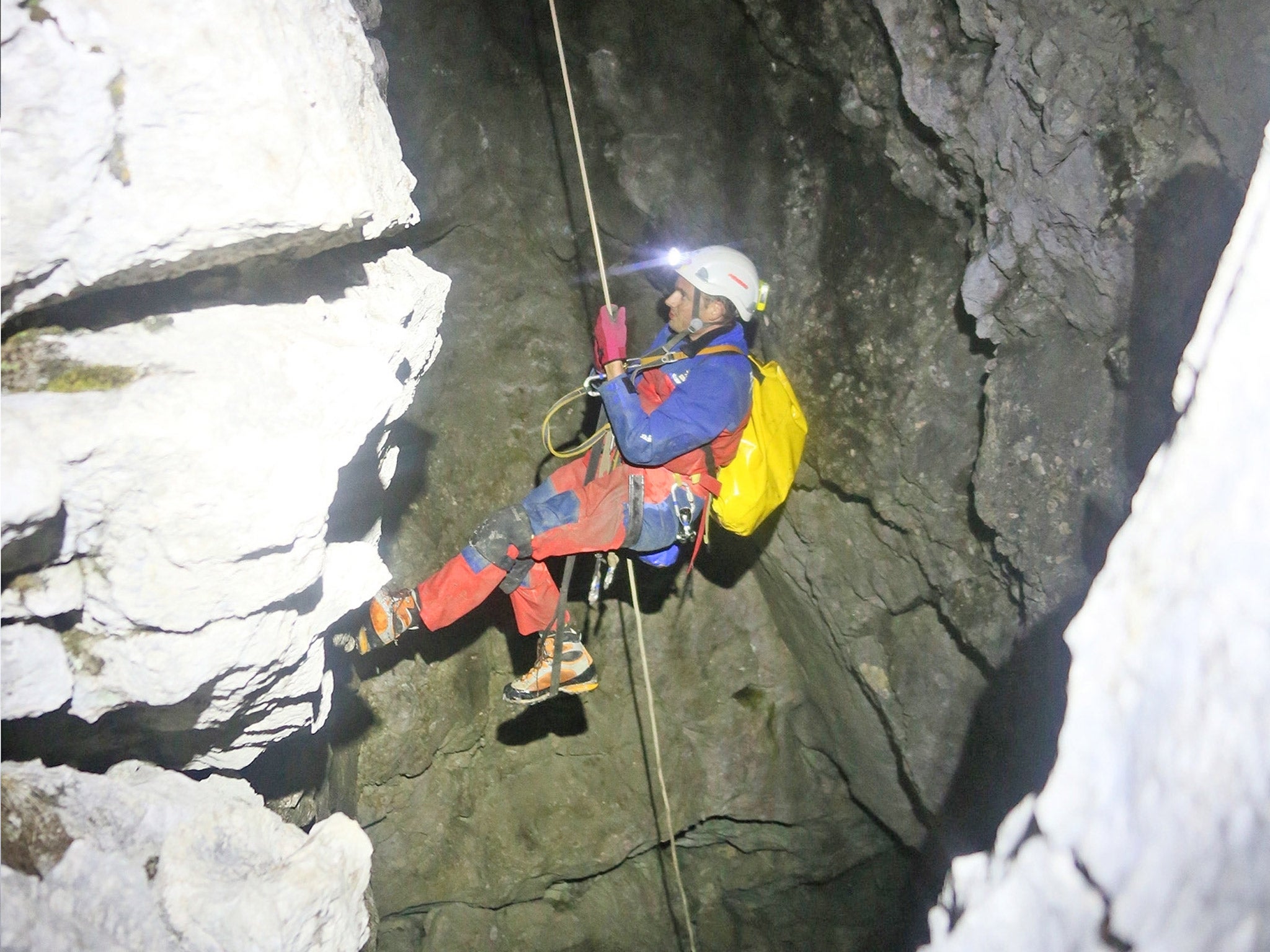German cave rescue: Search teams say they will take days to bring injured potholer to the surface from country’s deepest caves
The 52-year-old man was hit by falling rocks thousands of feet below ground

Your support helps us to tell the story
From reproductive rights to climate change to Big Tech, The Independent is on the ground when the story is developing. Whether it's investigating the financials of Elon Musk's pro-Trump PAC or producing our latest documentary, 'The A Word', which shines a light on the American women fighting for reproductive rights, we know how important it is to parse out the facts from the messaging.
At such a critical moment in US history, we need reporters on the ground. Your donation allows us to keep sending journalists to speak to both sides of the story.
The Independent is trusted by Americans across the entire political spectrum. And unlike many other quality news outlets, we choose not to lock Americans out of our reporting and analysis with paywalls. We believe quality journalism should be available to everyone, paid for by those who can afford it.
Your support makes all the difference.An injured potholer who is trapped deep in an Alpine cave is able to walk, rescue teams said, but the effort to free him from narrow passages thousands of feet below the surface could still take days.
The 52-year-old, named in German media as Johann Westhauser, was hit by falling rocks early on Sunday in the Riesending cave system near Berchtesgaden, on the Austrian border.
Mr Westhauser was reportedly one of the team who discovered the cave system in 1995.
A team of six caving experts from Germany, Austria and Switzerland had reached him today. He was conscious and reportedly able to walk, allaying fears that he might have been paralysed.
While the news of his condition was positive, the rescue, in Germany’s deepest cave system, remains difficult – some of the passages plunge vertically for almost 1,000 ft and many parts are extremely narrow. The accident happened more than three miles from the cave entrance.
Access to the site about half a mile underground is extremely limited, said rescuers. Mr Westhauser had suffered injuries to his head and torso. One of his two uninjured companions made a 12-hour climb back to the cave entrance to alert authorities, while the other man stayed with him.

Click HERE for full-size version of graphic
Mr Westhauser is nearly 3,300 ft below the surface “in one of the most difficult caves in Europe”, mountain rescue official Klemens Reindl told N-TV television.
By comparison, the deepest known cave in the world is Krubera Cave in Abkhazia on the Black Sea, which plunges to more than 6,500 ft. “Forget everything that you have ever heard about rescue operations in the mountains – we can’t get any equipment in at all to reach the injured man,” cave rescuer Norbert Rosenberger told German media.
He compared the rescue to “[climbing] the north face of the Eiger – without boots or cables”.
Subscribe to Independent Premium to bookmark this article
Want to bookmark your favourite articles and stories to read or reference later? Start your Independent Premium subscription today.
Join our commenting forum
Join thought-provoking conversations, follow other Independent readers and see their replies
Comments